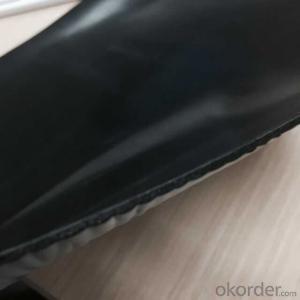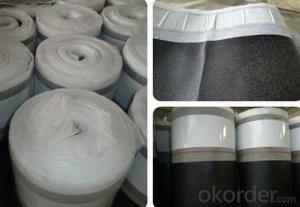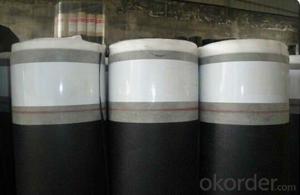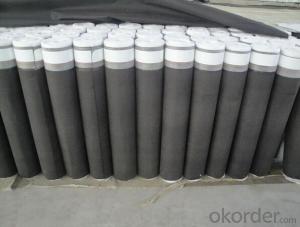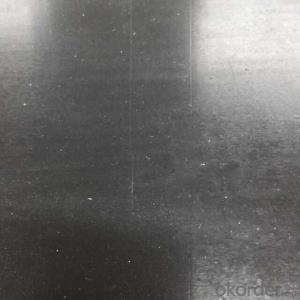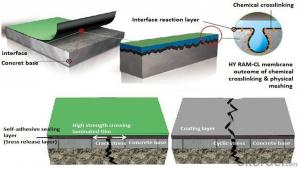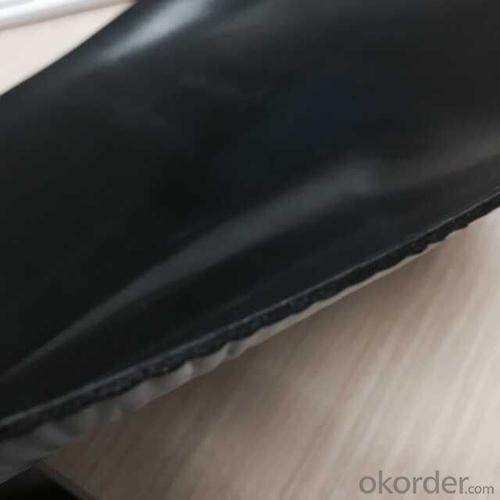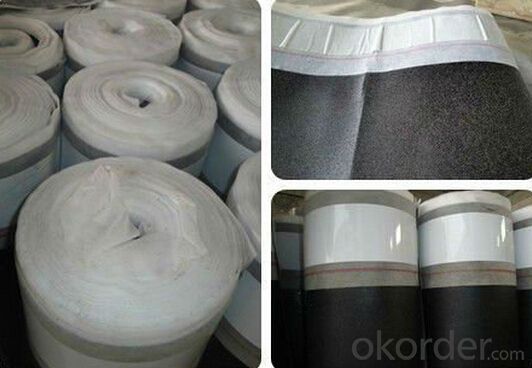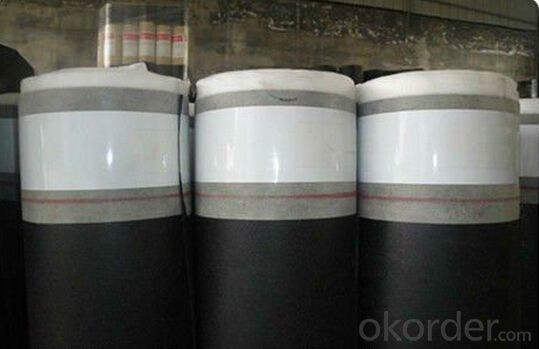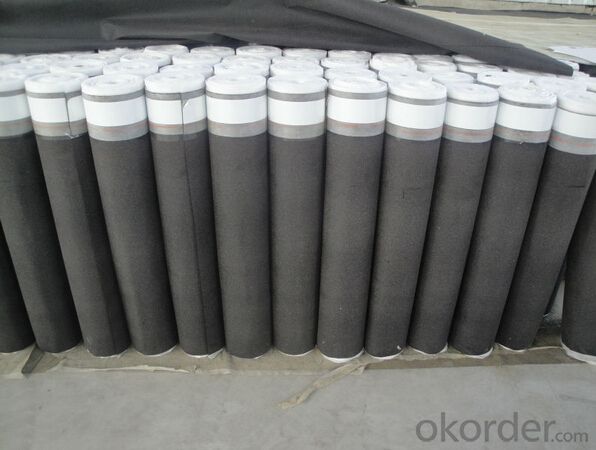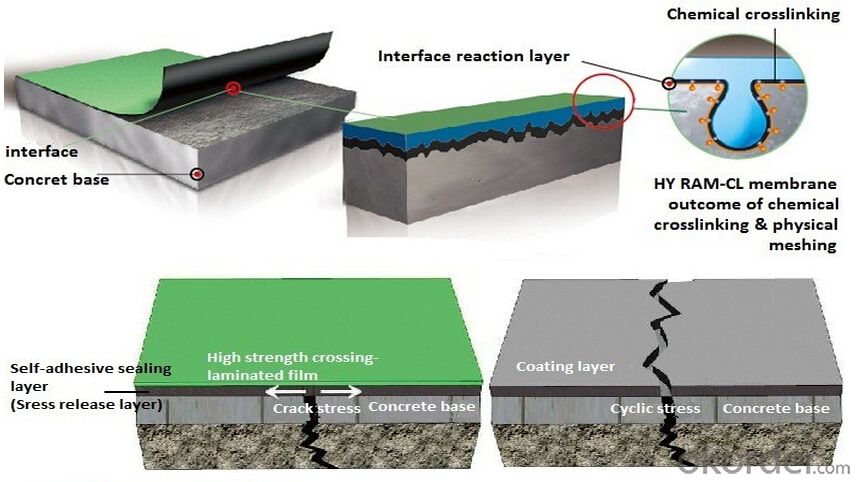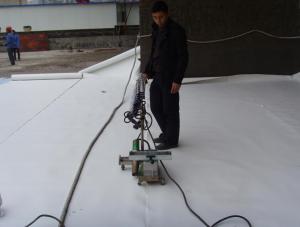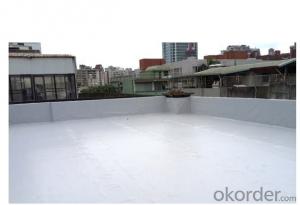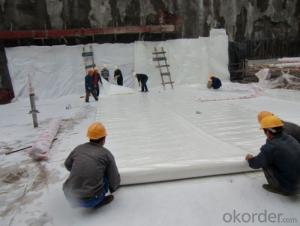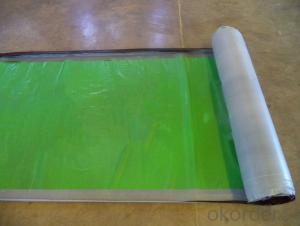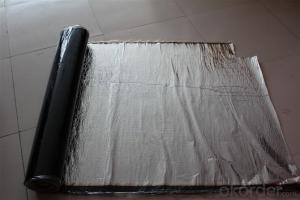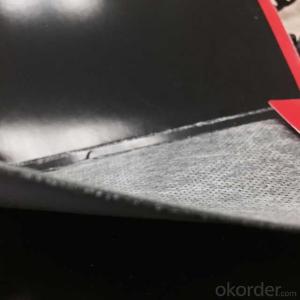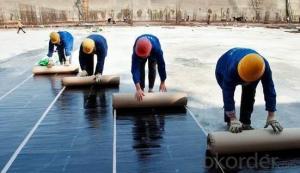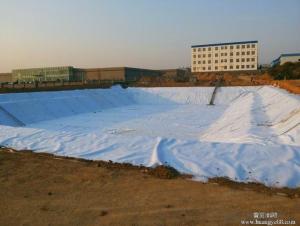Self-adhesive Bitumen waterproof membrane 1mm-4mm
- Loading Port:
- Qingdao
- Payment Terms:
- TT OR LC
- Min Order Qty:
- 2000 m²
- Supply Capability:
- 60000000 m²/month
OKorder Service Pledge
OKorder Financial Service
You Might Also Like
Specifications:
Introduction Self-adhesive Bitumen waterproof membrane 1mm-4mm:
SBS(Styrene Butadiene Styrene) /APP (Atactic Polypropylene) modified bitumen membrane is made by saturating the base in bitumen, or thermoplastic elastomer (such as SBS, APP, APAO, APO), reinforced with polyester or fiberglass, finishing the upward face with polythene membrane, fine sands or mineral slates (or grains) or etc.
Specification Self-adhesive Bitumen waterproof membrane 1mm-4mm:
Thickness | 3mm, 4mm, 5mm |
Width | 1m |
length | 7.5m, 10m, 15m, or on demand |
Base | Polyester or Fiberglass felt |
Surface | PE film, Aluminum foil, Yellow sand, Shale gravel(Schist), colored sand |
Type | could self-adhesive |
Notice | SBS modified bitumen membrane is specially applied in the cold district, APP modified bitumen membrane is more suitable for hot district with high temperature. could be self-adhesive modified bitumen membrane |
Applications Self-adhesive Bitumen waterproof membrane 1mm-4mm:
-Roof and underground in industrial and civil buildings;
-Bridge, subway, tunnel, swimming pool, etc.
-Waste landfill, sewage plant, irrigation system, etc.
-Self-adhesive Modified Bitumen Waterproof Membrane
-Easy applying and economic on the cost saving
Advantage Self-adhesive Bitumen waterproof membrane 1mm-4mm:
-Non-solidified, excellent elastic deformation,thus have good noise reducing;
-Easy applying and economic on the cost saving.
-Good performance on waterproof and economic sound damping.
Picture:
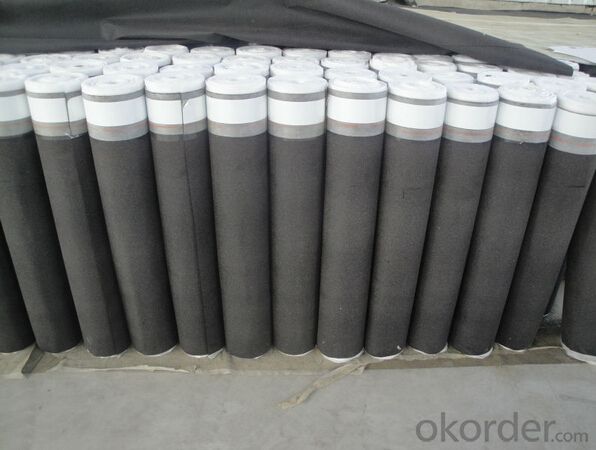
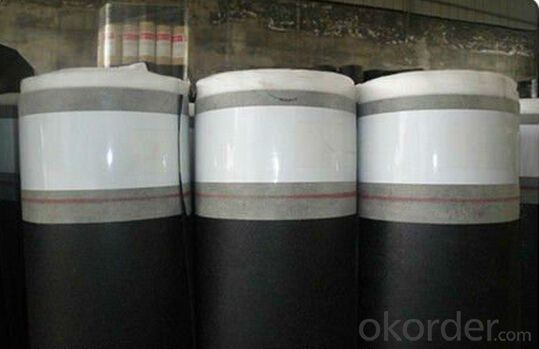
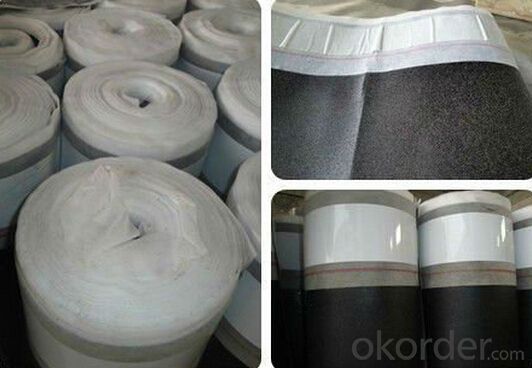
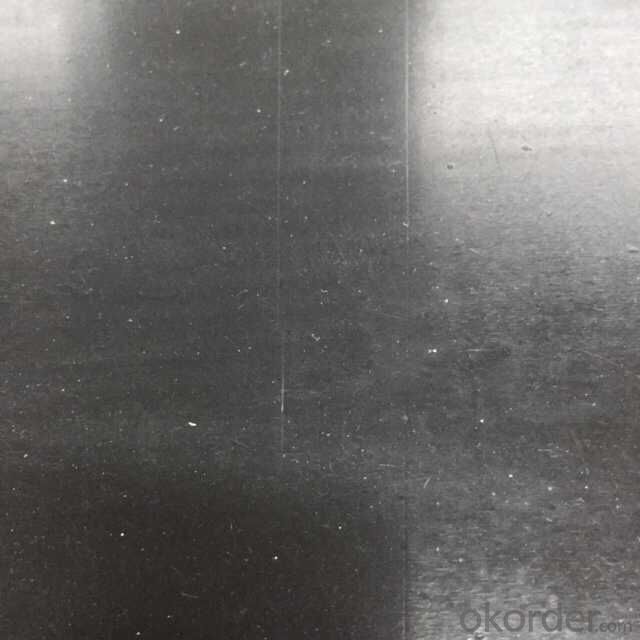
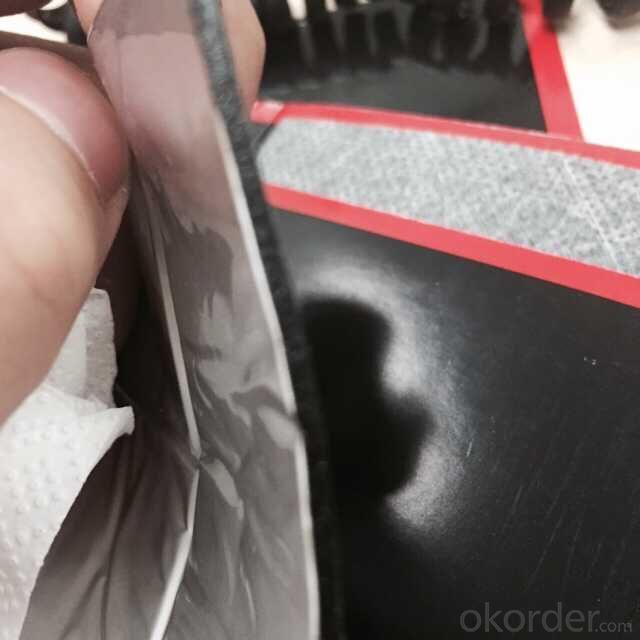
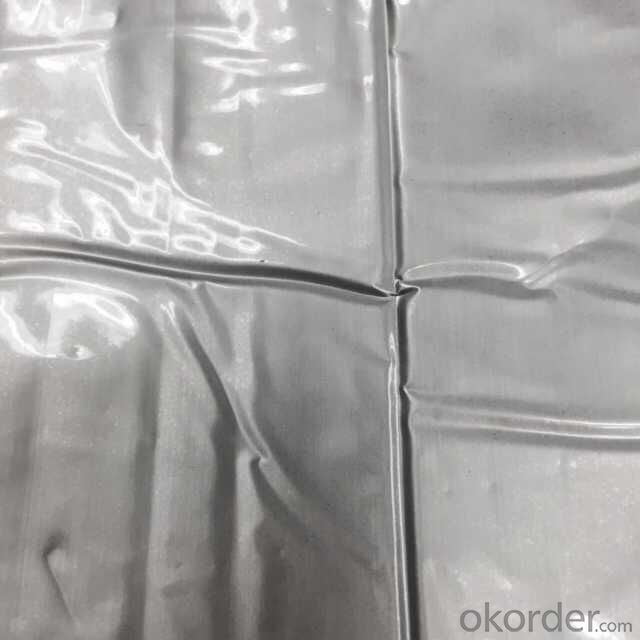
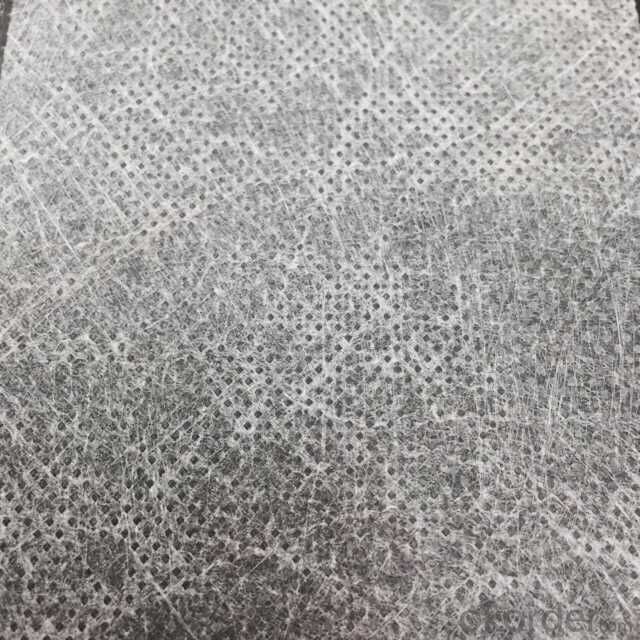
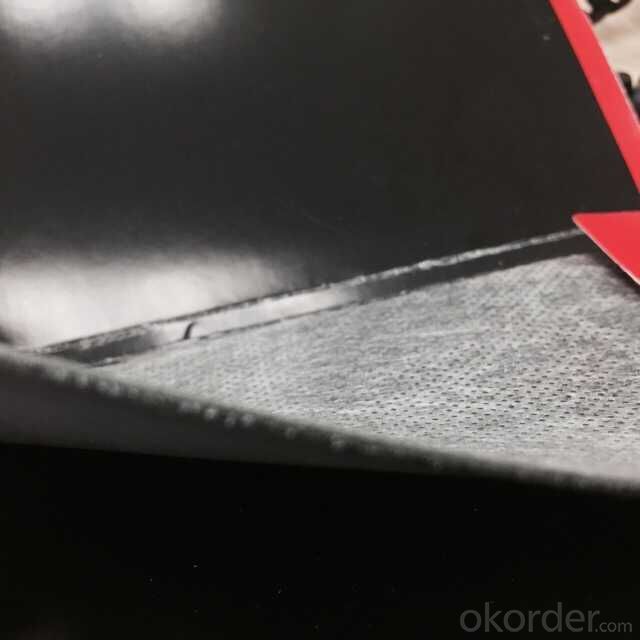
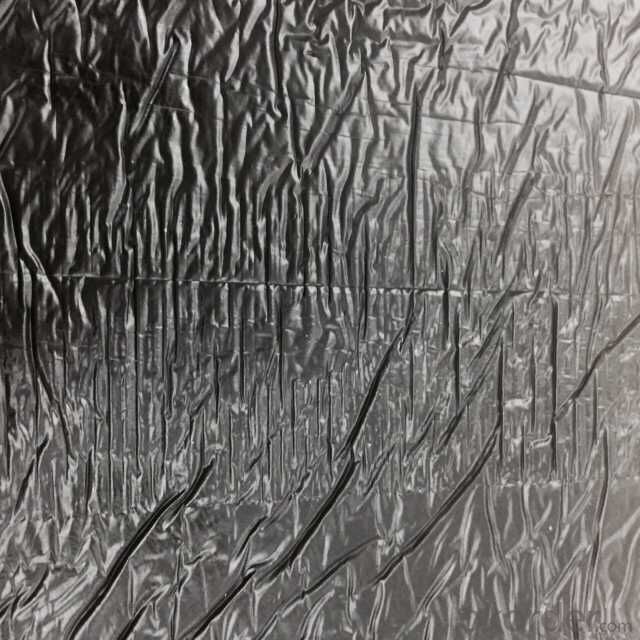
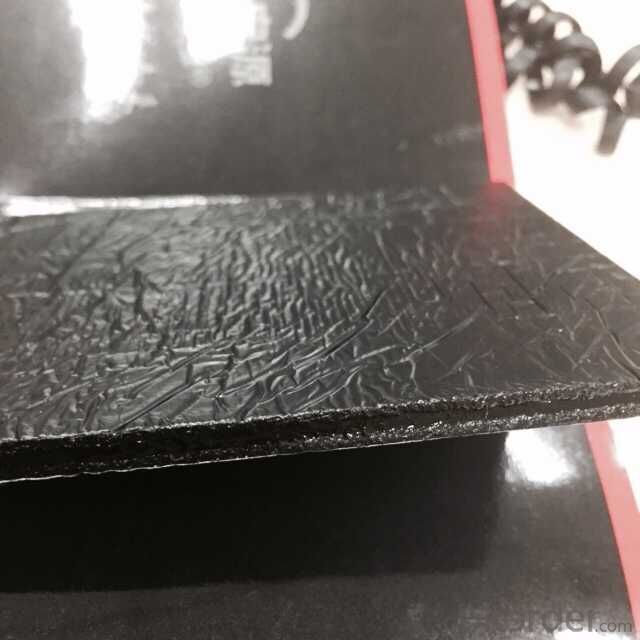
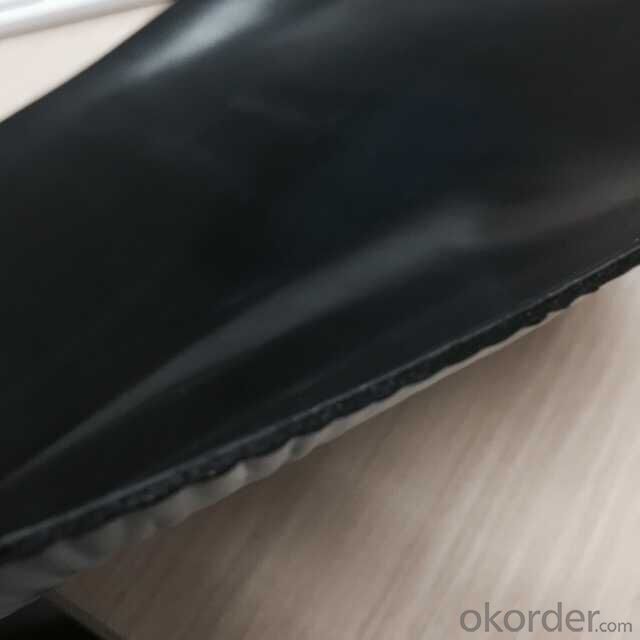
Storage Self-adhesive Bitumen waterproof membrane 1mm-4mm:
Shelf life is 12 months. Store in a cool and dry place with original packing.
Breathable Waterproof Roof Underlay membrane (PP-PP,S-PP,S-S)
Permeable membrane is polymer modified asphalt based, with surface of high strength polypropylene fiber. Back side coated with self adhesive glue or antiskid sand. Made by special process. With excellent waterproof performance and breathable properties.\
Description | Specification | Width | Length | Thickness | |
Roof underlay | 500g/m2PP—PP | 1000mm | 30m | 0.8mm | |
600g/m2S—PP | 1000mm | 25m | 1.0mm | ||
1500g/m2S—S | 1000mm | 20m | 1.3mm | ||
Roof underlay with adhesive band | 500g/m2PP—PP | 1000mm | 30m | 0.8mm | |
600g/m2S—PP | 1000mm | 25m | 1.0mm | ||
1500g/m2S—S | 1000mm | 20m | 1.3mm | ||
It is used as the underlayment of cement tile, painted pottery watts and asphalt shingle. Also suitable for all kinds of architectural roofing, walls, underground waterproof and damp proof project.
Features:
It has good waterproofing and ageing-resistance function,not flowing at highest temperature and no crack at lowest temperature;
Easy application,no pollution,and long service life etc.
Usage:
It is widely used for industry and civil building --- the waterproof and dampproof of the roofs,basements,toilets etc;and the waterproofing of bridges,parking area,tunnels,reserviors etc.
It is specially suitable to the building waterproofing in cold area and to the buildings of changeable constructions.
Requirements for surroundings
-The base should be dry and clean. Do not work in the rainy or snowy day.
-Do not work under heavy wind(above 5 grade)
-Unsuitable for construction below 0°C
FAQ:
1. What are we supplying?
We are specialized in producing Colorful Asphalt Roof Shingle, SBS/APP modified bitumen waterproof membrane, Self adhesive bitumen waterproof membrane, PVC waterproofing membrane, EPDM rubber roofing membrane, Single Component Polyurethane Waterproof Coating, and Spray Polyurea Waterproof Coating
2. How Many years experience do we have?
We have been exported to more than 20 countries in the past 15 years.
3. How long do we usually reply your request?
We always reply our customer within 24 hours.
- Q: Can a waterproofing membrane be used on precast chrome surfaces?
- Yes, a waterproofing membrane can be used on precast chrome surfaces. The membrane will provide a protective barrier against water penetration, ensuring the durability and longevity of the precast chrome surfaces.
- Q: Can a waterproofing membrane be used for elevator shafts?
- A waterproofing membrane is an effective solution for elevator shafts. Elevator shafts are prone to water infiltration, which can harm the building's structure and the elevator system itself. By using a waterproofing membrane, water can be prevented from entering the shaft, safeguarding it against moisture-related issues such as corrosion, mold, and mildew. Typically, the membrane is applied to the shaft's walls and floors, creating a barrier that blocks water. To ensure optimal effectiveness and durability, it is important to select a waterproofing membrane specifically designed for elevator shafts. Moreover, proper installation and maintenance are crucial for the long-term performance of the waterproofing system. In conclusion, employing a waterproofing membrane for elevator shafts is a recommended measure to shield against water damage and uphold the elevator system's functionality and safety.
- Q: Can waterproofing membranes be used on retaining walls?
- Yes, waterproofing membranes can be used on retaining walls. These membranes are designed to prevent water penetration and can help protect the retaining wall from moisture damage.
- Q: How are waterproofing membranes installed?
- Waterproofing membranes are installed to protect buildings and structures from water damage. The installation process typically involves several steps. First, the surface that is to be waterproofed must be properly prepared. This usually involves cleaning the surface and removing any debris or loose materials. It is important to ensure that the surface is smooth and free of any irregularities or cracks. Next, a primer is applied to the surface. This helps to create a strong bond between the membrane and the surface. The primer is typically applied using a brush or roller, and it is allowed to dry completely before moving on to the next step. Once the surface is primed, the waterproofing membrane can be installed. There are several different types of membranes available, including sheet membranes, liquid membranes, and peel-and-stick membranes. The specific type of membrane used will depend on the needs of the project and the surface being waterproofed. For sheet membranes, the material is typically unrolled and carefully positioned over the primed surface. It is important to ensure that the membrane is properly aligned and that there are no wrinkles or air pockets. The membrane is then pressed down firmly to create a strong bond with the surface. Liquid membranes are typically applied using a brush or roller. The liquid is spread evenly over the primed surface, and multiple coats may be applied to ensure a complete and effective waterproofing layer. It is important to allow each coat to dry before applying the next. Peel-and-stick membranes are the easiest to install. The backing is peeled off the membrane, and it is carefully pressed onto the primed surface. The adhesive on the back of the membrane creates a strong bond with the surface. Once the membrane is installed, any seams or joints must be properly sealed. This is typically done using a waterproofing tape or sealant. The goal is to create a continuous and watertight barrier to prevent any water from seeping through. Overall, the installation process for waterproofing membranes requires careful preparation, proper application, and attention to detail. It is important to follow the manufacturer's instructions and to use the appropriate materials and techniques for the specific membrane being installed. By doing so, a reliable and effective waterproofing system can be created to protect the building or structure from water damage.
- Q: Can a waterproofing membrane be used in areas with high humidity and moisture?
- Yes, a waterproofing membrane can be used in areas with high humidity and moisture. The purpose of a waterproofing membrane is to provide a protective barrier against water and moisture, making it suitable for such environments. It helps prevent water infiltration, mold growth, and damage caused by excessive moisture, making it an ideal solution for humid and moisture-prone areas.
- Q: Can a waterproofing membrane be used on precast steel surfaces?
- Yes, a waterproofing membrane can be used on precast steel surfaces. The membrane is designed to provide a protective layer against water penetration, making it suitable for application on various surfaces, including precast steel. This can help prevent corrosion and prolong the lifespan of the steel structure.
- Q: Can waterproofing membranes be used in wet areas like bathrooms?
- Waterproofing membranes are indeed suitable for wet areas such as bathrooms. It is strongly advised to utilize these membranes in bathroom spaces to prevent water damage and leaks. These membranes are specifically designed to form a barrier against moisture, guaranteeing that water does not infiltrate the bathroom's walls, floors, or other surfaces. By applying a waterproofing membrane, you can effectively safeguard the underlying structure from water damage, mold growth, and other issues caused by extended exposure to moisture. This is particularly crucial in wet areas like bathrooms where water is consistently present. Waterproofing membranes can be found in various forms, including sheet membranes, liquid membranes, and even pre-formed shower trays. They can be applied to walls, floors, shower enclosures, and other surfaces to create a tight seal against water. It is essential to correctly install and maintain the waterproofing membrane according to the manufacturer's guidelines to ensure its efficacy and durability. Therefore, if you are contemplating renovating or constructing a bathroom, it is highly recommended to use waterproofing membranes to guarantee a long-lasting and moisture-resistant space.
- Q: Can a waterproofing membrane be used on tunnels with vehicular traffic?
- Tunnels with vehicular traffic can benefit from the application of a waterproofing membrane. These membranes are designed to act as a barrier against water infiltration, safeguarding the structure from potential damage caused by moisture. In the presence of vehicular traffic, water can seep through the concrete, leading to corrosion, deterioration, and even compromising the tunnel's structural integrity. By utilizing a waterproofing membrane, a protective layer is created, preventing water from penetrating the tunnel's walls, roof, and floor. This protective measure not only prolongs the lifespan of the tunnel but also guarantees the safety of vehicles passing through. However, it is crucial to carefully choose a waterproofing membrane specifically engineered to withstand heavy traffic conditions, successfully enduring the constant load and wear. Moreover, proper installation and regular maintenance play a vital role in ensuring the effectiveness and longevity of the waterproofing system in tunnels with vehicular traffic.
- Q: Is a waterproofing membrane resistant to punctures or tears?
- A waterproofing membrane is created to resist punctures or tears, being made from robust materials like PVC, TPO, or EPDM, renowned for their strength and damage resistance. These membranes undergo extensive testing to ensure they can endure different environmental conditions and potential causes of punctures or tears, like sharp objects or heavy foot traffic. Some waterproofing membranes even have reinforcement layers or added protection to further strengthen their resistance to punctures and tears. Nevertheless, it is crucial to note that while waterproofing membranes are highly durable, they are not entirely immune to damage. Proper installation, regular maintenance, and avoiding unnecessary stress or impact on the membrane can help extend its lifespan and enhance its performance.
- Q: Does a waterproofing membrane provide any protection against radon gas?
- No, a waterproofing membrane does not provide any protection against radon gas. Radon gas is a radioactive gas that can seep into buildings through cracks and openings in the foundation or walls. While a waterproofing membrane can help prevent water penetration and moisture issues, it does not provide an effective barrier against radon gas. To protect against radon gas, specific radon mitigation measures such as sealing cracks, installing a radon mitigation system, or improving ventilation should be implemented. It is important to consult with radon professionals who can assess the radon levels in your area and provide appropriate recommendations to mitigate the gas.
Send your message to us
Self-adhesive Bitumen waterproof membrane 1mm-4mm
- Loading Port:
- Qingdao
- Payment Terms:
- TT OR LC
- Min Order Qty:
- 2000 m²
- Supply Capability:
- 60000000 m²/month
OKorder Service Pledge
OKorder Financial Service
Similar products
Hot products
Hot Searches
Related keywords
